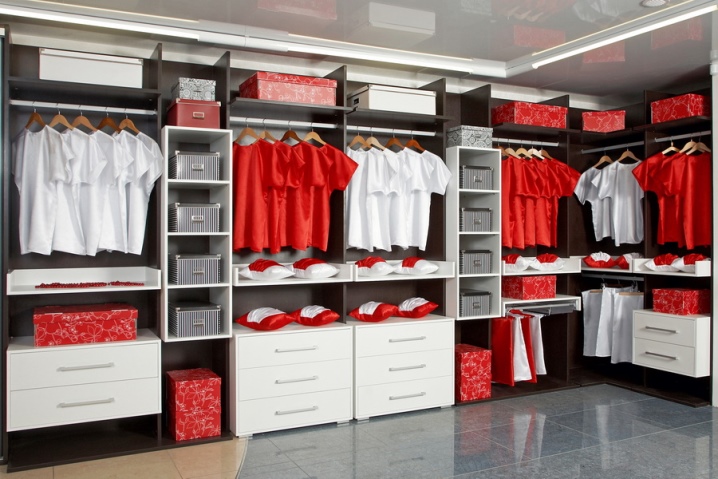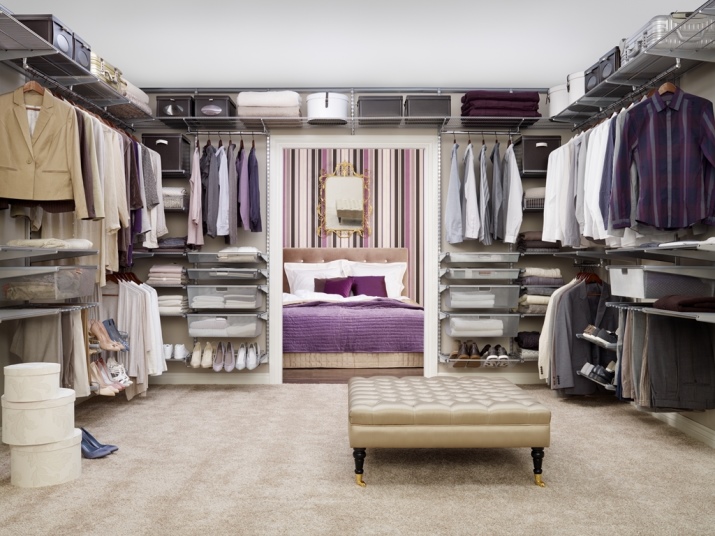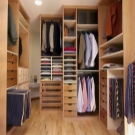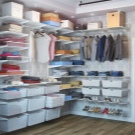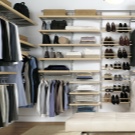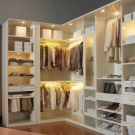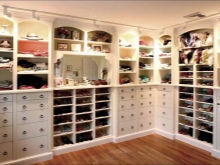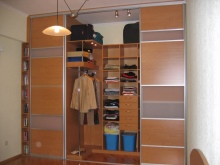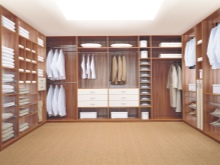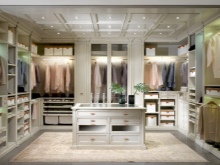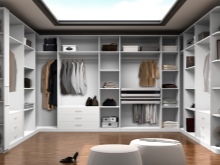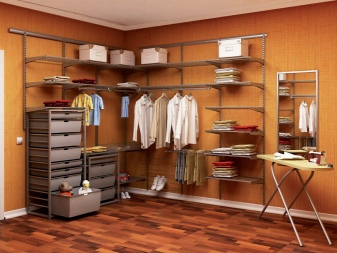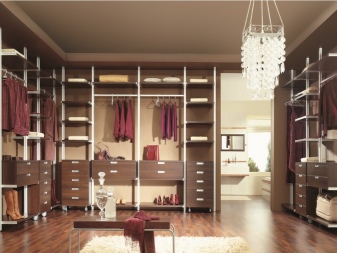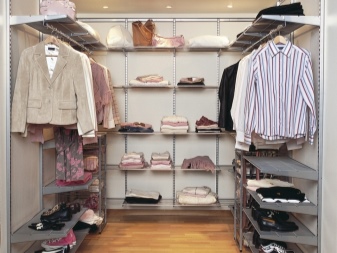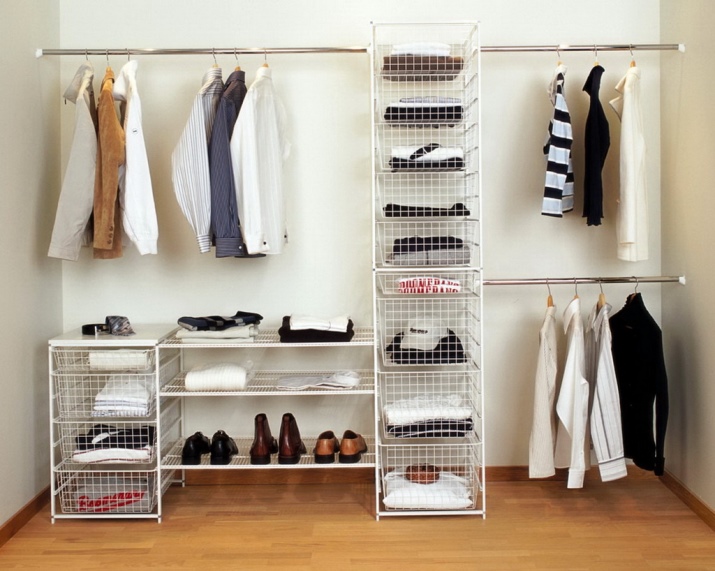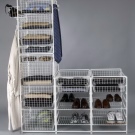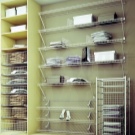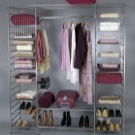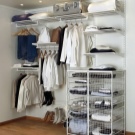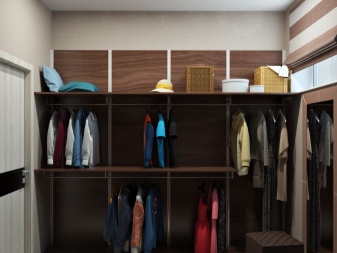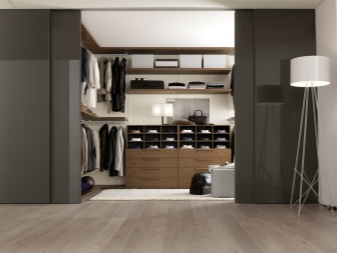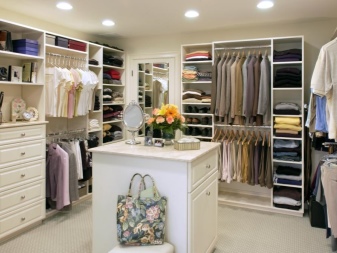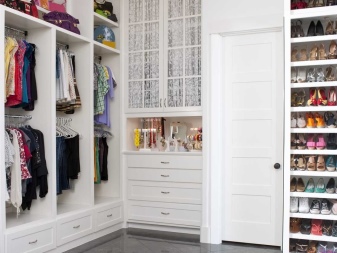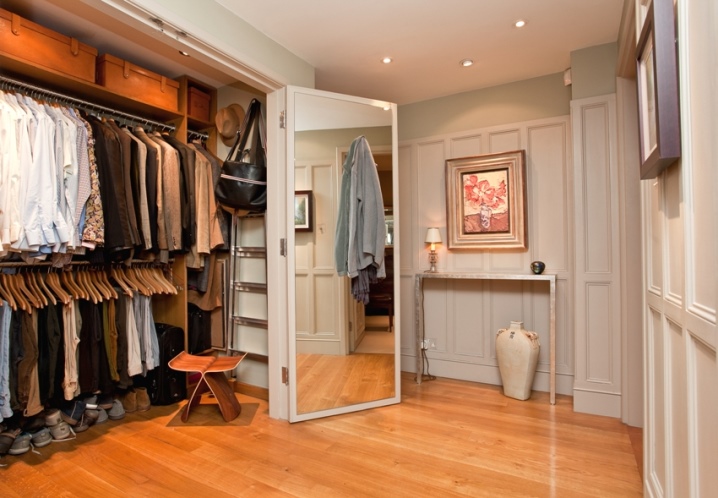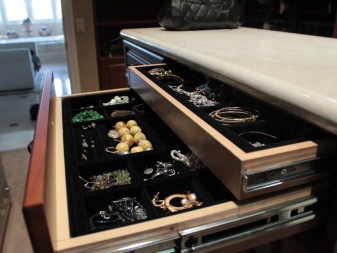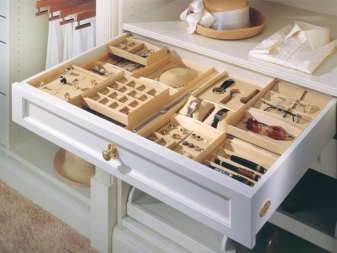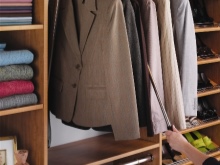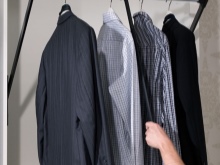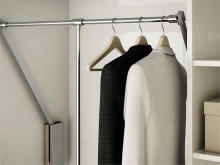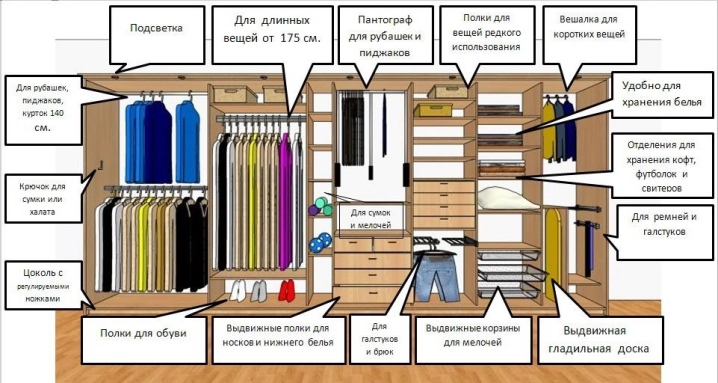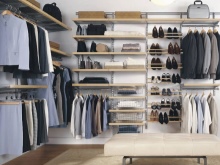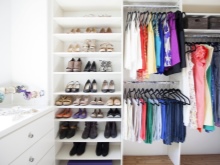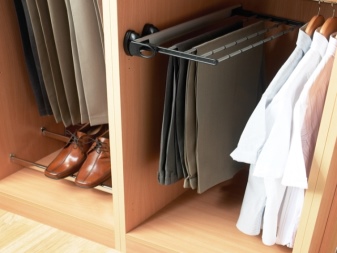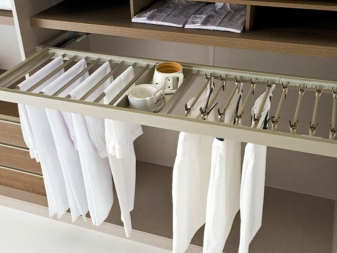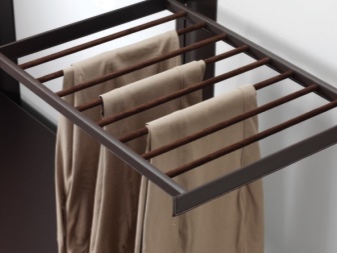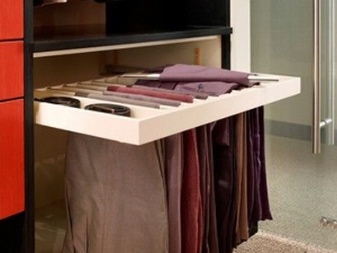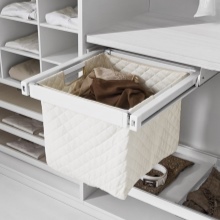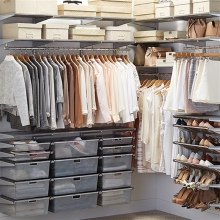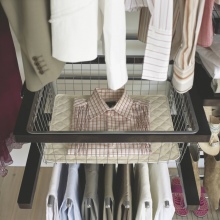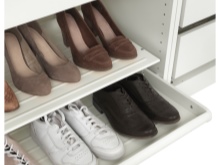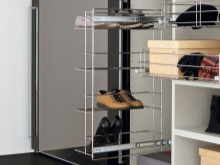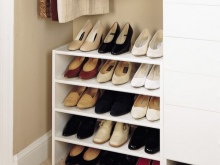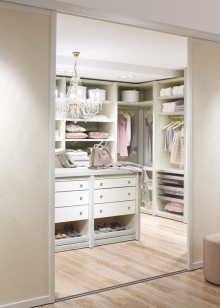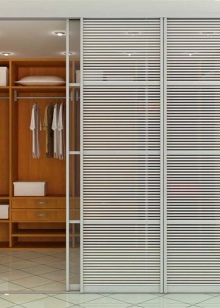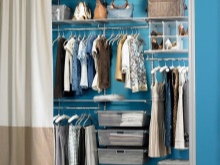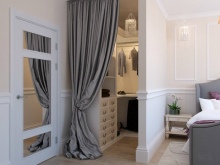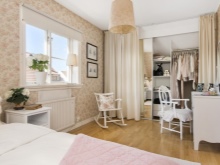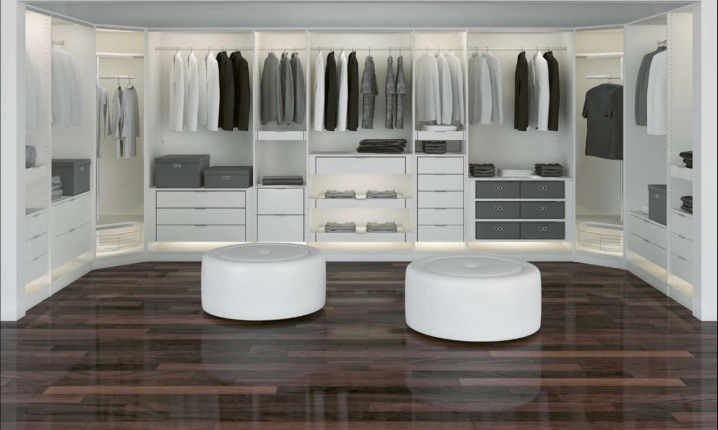Furniture for the wardrobe room
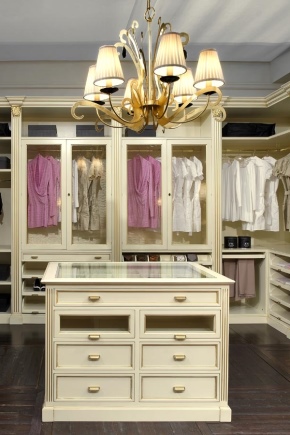
Choosing furniture for a dressing room is not an easy task. It differs significantly in its design, the materials from which it is made, as well as internal filling. The characteristics of a particular storage system will be discussed in this article.
Features and benefits
Among the features of furniture for a dressing room, there are several:
- With proper organization, it will have better ergonomics than the closet. This will help save space and not to load the room with extra cabinets and drawers - they steal space separately, especially when opening doors or drawers.
- The presence of closed sections to protect the contents from dust, and open, providing the necessary air circulation.Open compartments are needed for products made of fur, leather and other natural materials that need air to maintain appearance. They also improve visibility and usability.
- All sections, holders and shelves can be metal. Inside the dressing room they are hidden from prying eyes and therefore it is possible not to adhere to aesthetic requirements and consistency with the overall design of an apartment or house.
The dressing room can also be entered into the interior with the help of a curtain, which is cheaper than a wardrobe, which must have the appropriate look.
Thus, all the features at the same time are advantages. This is a modern and convenient way to store a variety of things.
Species
There are three main types of furniture for dressing rooms, they can also be combined with each other:
- Freestanding - the most common. It consists of a set of body elements fastened together. The result is a design that resembles a wardrobe. It is made, as a rule, from a chipboard. In rare cases, from tinted wood.
One of the advantages over other types of structures is the possibility of using side panels.They can attach various holders for clothes, belts, ties and ironing boards, as well as hung or shoe shelves.
- The panel structure, besides storage, also performs a decorative function. It is made of natural wood, for example, pine, and also of slabs, veneered. Due to these features, compact and numerous placement of shelves, drawers and clothes on hangers will be inappropriate, and also technically difficult to do. For such a dressing room to be spacious and beautiful, you need a lot of space. However, due to the aesthetic properties it can be used in small rooms in the open form.
Note that the cost of such a system of natural wood is quite high, and the use of veneered panels can degrade aesthetics.
- Modular (frame) furniture consists of shelves mounted on metal rails or racks. The material is aluminum or steel. Parts made of aluminum are treated by anodizing, chrome plating, polishing, painting or veneering. Steel is painted or laminated. The main advantage of this design is the ease of assembly, disassembly and modification.Thus, modules can be easily disassembled and installed in a new room, change the height of the shelves, or add additional ones.
If necessary, you can purchase a variation of furniture on wheels for greater mobility inside the dressing room.
Furniture modular furniture depends on the type of frame. For fixing shelves, baskets and hangers on racks, guides (stationary or sliding) are used, on rails - brackets, to which, if necessary, sliding elements are attached.
In cabinet furniture the same systems are used for extension, as in the frame. They can work on ball or roller mechanisms. There are new advanced devices - tandems. They are equipped with automatic closers, which allows the box to move independently until the end. Another advantage of them is noiseless and smooth running.
In a complete dressing room, in addition to furniture storage itself, there are usually two mirrors, adequate lighting, a pouf or chair.
If there is a shortage of space for the equipment of such a room, it can be arranged in the hallway. Then the storage complex will be closed by sliding doors with mirrors,and in the hallway itself you can hang another mirror on the opposite wall, the necessary lighting and put the furniture: a table and a pouf.
Types of furniture
The interior of the dressing room includes many different elements. Shelves, drawers, baskets and hangers are placed in the wardrobes.
Shelves can be installed at different heights for better sorting of stacked items or for specific boxes. Drawers can have dividers for small items: ties, belts, underwear, and socks. Special boxes are also available in which you can conveniently store bijouterie.
For placement of clothes pantographs, stationary and sliding bars are used. The choice of a device depends on the overall ergonomics of the dressing room. That is, in some cases, it will be more efficient and convenient to use a retractable bar, and in another - a hanging-up lift (it is also called a pantograph). If there is a lot of clothing that needs to be stored on hangers, it may be better to use a stationary barbell. Permissible load on it can reach 22 kg. Retractable rod can withstand up to 16 kg.
The weight that a pantograph can support is strongly dependent on its size.So, with a length of 0.8-1 m, you can place up to 15 kg on it, and on a hanging-lift more than a meter you will only be able to place 7-8 kg.
Based on the fact that the compartment for outerwear should have a height of at least 1.2 m, and for shirts and jackets - 0.85 m, the use of a pantograph will help to distribute everything correctly. If the jackets and coats are placed in a compartment with a stationary barbell and the pantograph is hung in another compartment, then the remaining space under the shirts can be left under the drawers or shelves.
Generally speaking, the distribution of compartments for coat hanger is a responsible and difficult task. It should be borne in mind that the distance between outerwear should be 10 cm, the gap between shirts and jackets should be about 7-8 cm, and between dresses should be 9 cm. Therefore, it is necessary to proceed from personal needs and consider different combinations of all three devices.
For compact storage of trousers and skirts are designed folding hung with crossbars in the form of tubes inside the frame. These devices come in different widths. They can be attached to the side wall of the cabinet.
Boxes for clothes can be solid, perforated bottom or be in the form of a grid.The last two options provide better ventilation of the contents.
Shelves for shoes can be placed both in the closet and separately from it. They are:
- stationary and sliding;
- flat or sloping with a heel holder;
- with side dividers;
- with closed or ventilated bottom.
Tips for choosing
Before choosing a particular type of furniture, it is first necessary to assess the volume, weight and nature of the contents of the dressing room. Then determine the place where it will be located. If it is a niche that can be fenced off by doors, both a cabinet and modular system will do. If the space for the dressing room needs to be fenced off, then the cabinet will be better suited to reduce material and other costs. Its outer part can be decorative.
In a small apartment, with a lack of space, an open panel construction can become an exit. To preserve aesthetics, clothes can be packed in identical covers, and for other things you can use decorative boxes, boxes and baskets. The modular system fits perfectly into a rented apartment. It is easily dismantled when moving. You can isolate it from prying eyes with the help of a folding screen.
When choosing a particular type of structure, it is also necessary to take into account the weight of what will be stored in it. The most reliable in this regard will be hull systems.
It should also be remembered that all types of structures can be combined with each other, depending on housing conditions, material capabilities and personal needs.
